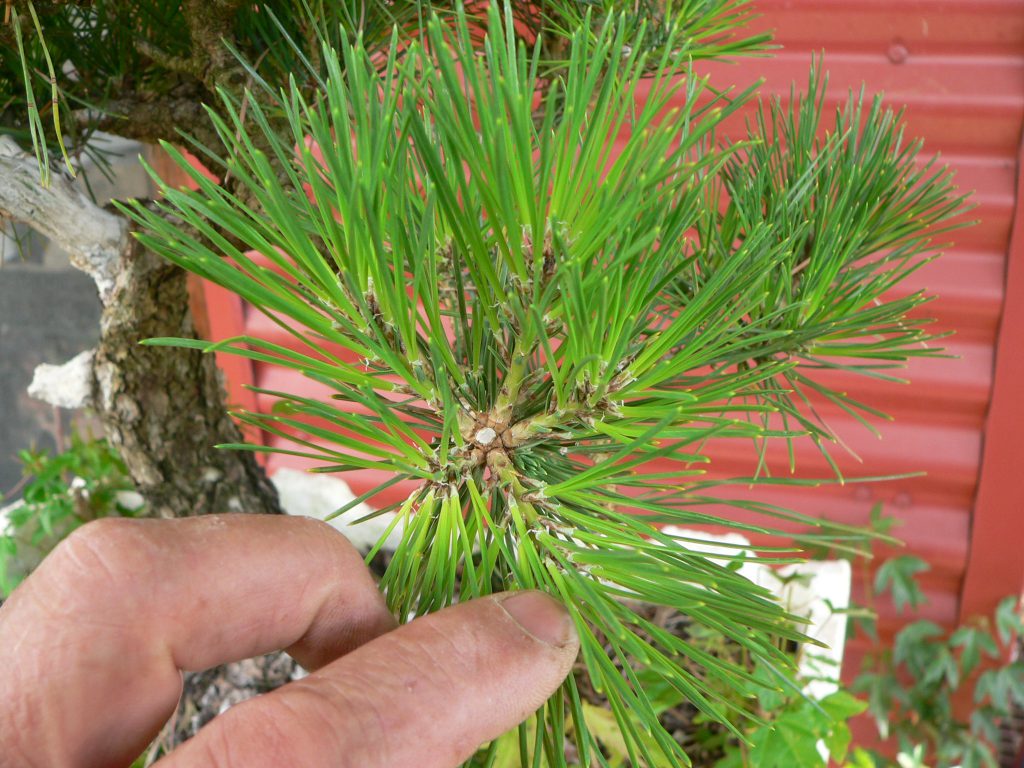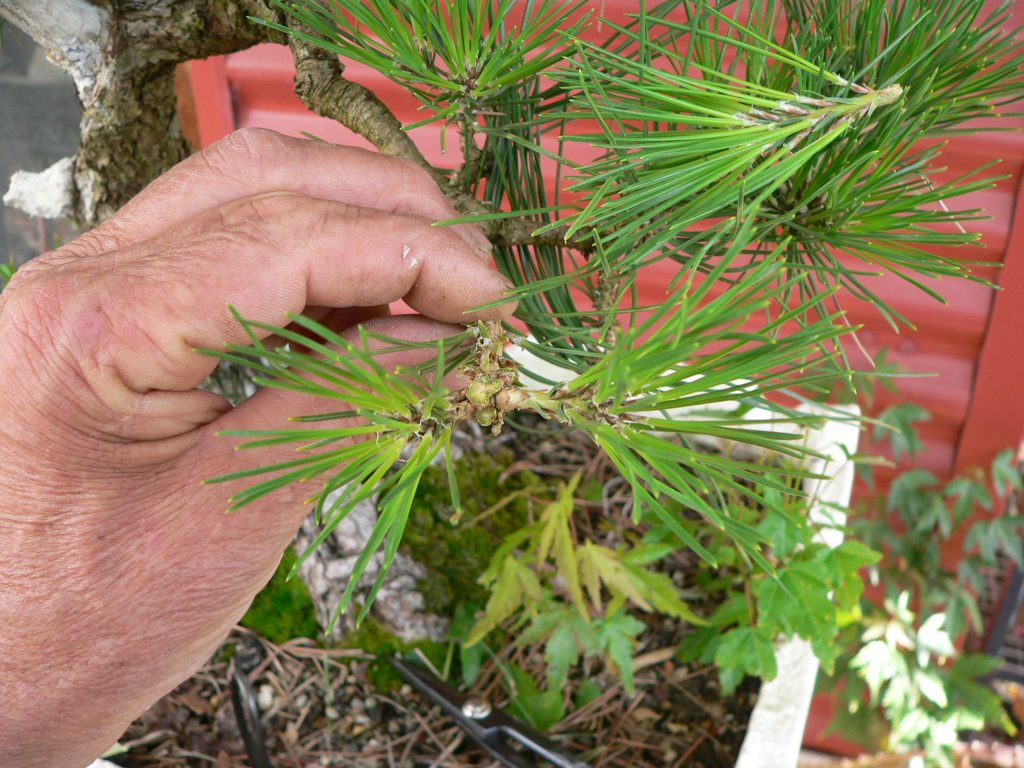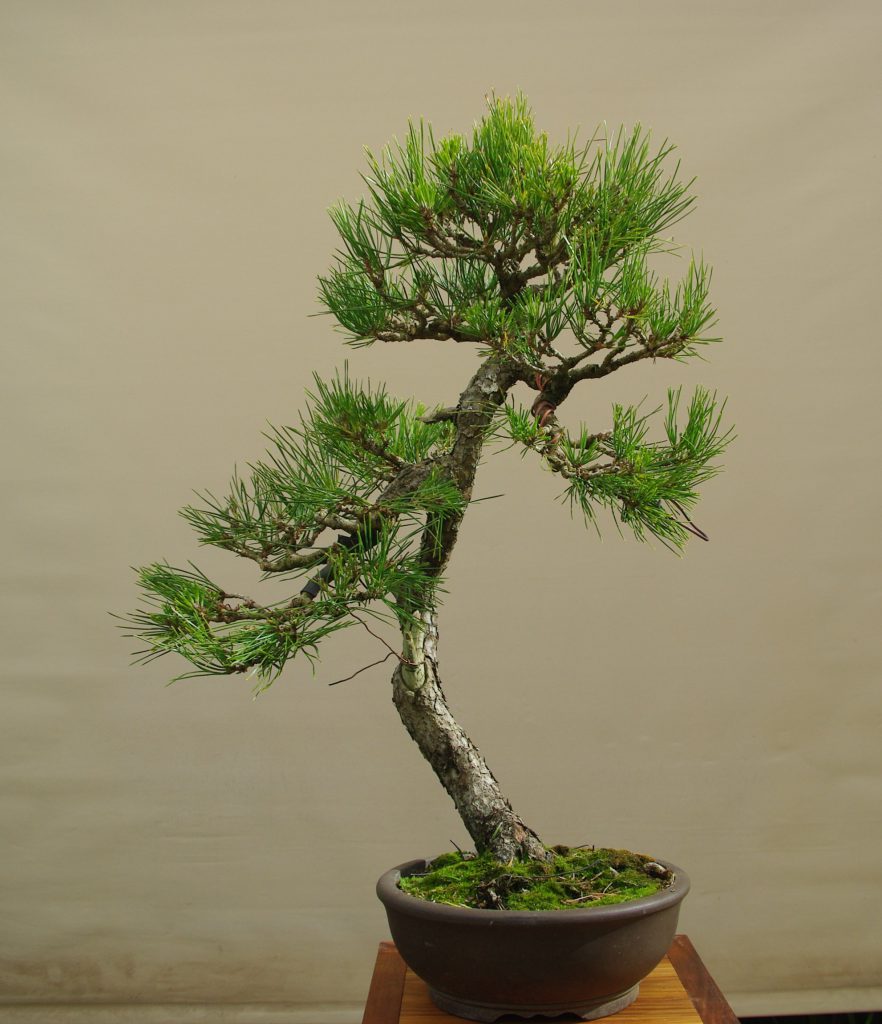It is Autumn here at Shibui Bonsai. There is also a partial business shutdown response to COVID 19 virus pandemic so I’m doing my bit by not going out too much. That allows me to get on with some of the autumn bonsai tasks like needle pulling and reducing the new shoots on some pines.
For those who are new to pines as bonsai there are some specific strategies to control the growth that differ from most other species.
There are also differences in growing techniques depending on the age and stages of development of our pines. Young growing pines can be allowed to grow freely for a year or 2 at a time to increase trunk thickness then cut back to the lowest needles to get new buds which then grow the new trunk and branches.
When the trunk is thick enough we move to trying to make branches and apex ramify to build the smaller branches and twigs that will give us foliage pads. In early summer all new shoots are pruned off the trees. New buds form in clusters around the base of each of the pruned shoots. Those buds are allowed to grow through summer but they are generally less vigorous than the spring shoots so we end up with much shorter new shoots which makes the branching much more compact – just what we need for bonsai. As an added benefit the needles are usually shorter too.
At the end of summer the new shoots are all mature and we need to thin out excess shoots and remove excess needles. That’s what I’m up to now.
Here’s one of my Japanese Black pines before thinning. All the shoots are new growth after decandling in mid December.

The new shots are nice and short but there’s way too many. If I leave clusters of shoots together the branches will thicken awkwardly wherever there are clusters of shoots growing together. The picture below shows what I’m talking about.

There are 5 shoots all growing from the same place at the end of that branch. I need to take some off and leave only 2 at any place.

I try to leave the shoots that are sideways like the picture above to make the branch spread out sideways but it is more important to prune to manage strength. This was a stronger growing branch so I’ve pruned off the strongest shoots and left 2 of the smaller ones. In weaker areas I would cut off the weakest and leave a couple of stronger shoots so that branch will grow better next year. Doing this over a couple of years should help make all parts of the tree grow with similar vigour.
The other autumn task with these pines is to remove excess needles. Usually I pull off all the older needles. There’s no need for those old needles on these developed bonsai pines because we already have plenty of shoots. Removing needles is another way we can balance the strength to get equal vigour all over the tree. It also allows light to reach into all the branches so the remaining shoots will be healthy for next spring. If any of the new shoots are too strong I also pull off some of the new needles so that all shoots on the tree will have a similar number of needles. This also helps balance the strength of all shoots so next year’s growth will be more equal all over the tree.
This tree also needed some wiring to reshape some of the branches. Here it is after a couple of hour’s work.

The lower left branch is still a bit straight so doesn’t quite match the trunk. I’ll be working towards putting some movement into it and separating the smaller branches on it into a couple of distinct pads. That work could take a couple of years to achieve.
The techniques I’ve used on this tree are suitable for Black pines and Red pines. Both are recognised as ‘dual flush’ pines meaning they can produce new shoots after the spring ones are pruned. Single flush pines like Mugho and white pines are not able to grow new summer shoots so they need slightly different pruning techniques.
